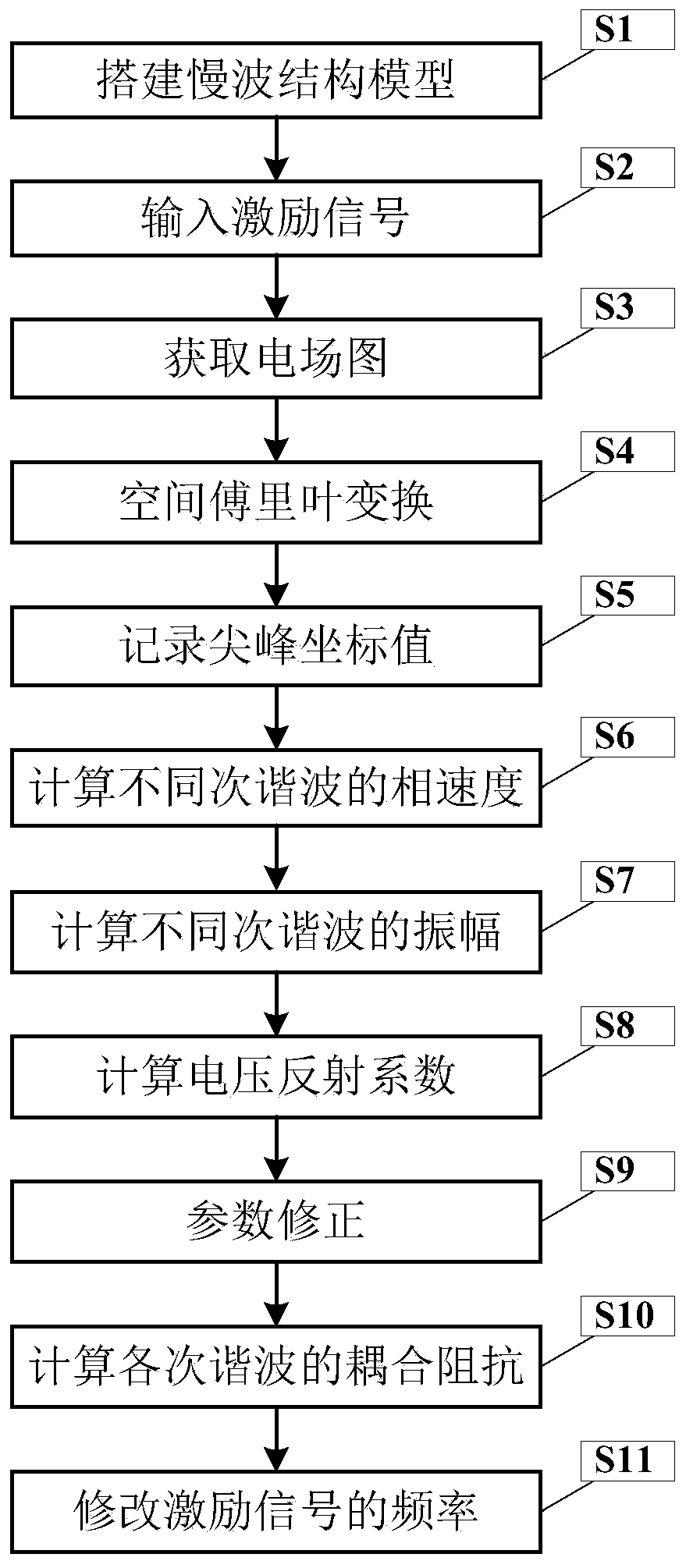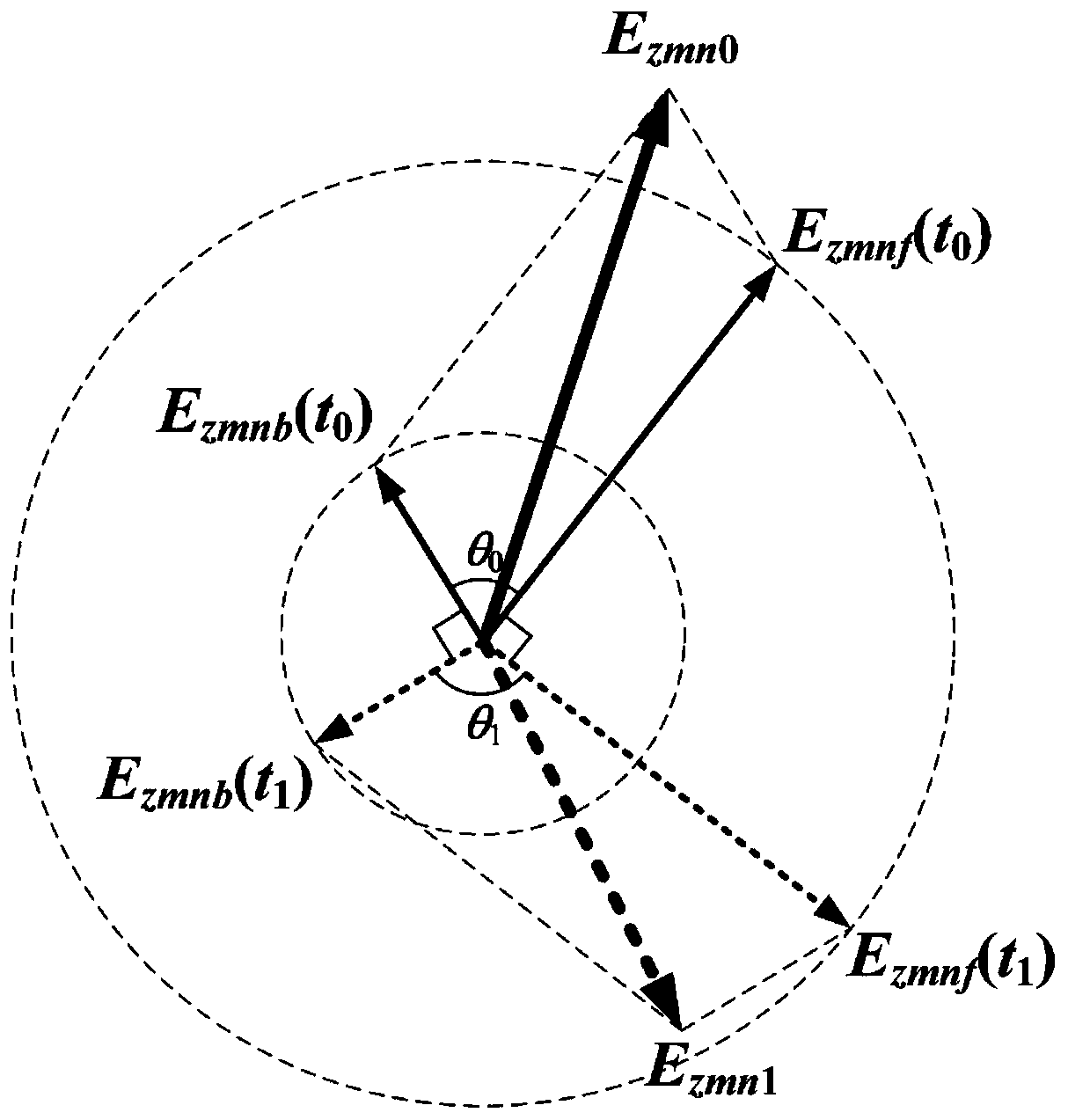Method for obtaining dispersion characteristics and coupling impedance of slow wave structure
A technology of slow-wave structure and coupling impedance, applied in the field of linear beam microwave electric vacuum devices, can solve problems such as errors, inability to distinguish between working modes and periodic boundary conditions, and inability to effectively explain characteristics, and to avoid the limitation of periodic boundary conditions. Effect
- Summary
- Abstract
- Description
- Claims
- Application Information
AI Technical Summary
Problems solved by technology
Method used
Image
Examples
Embodiment
[0050] figure 1 It is a flowchart of a method for obtaining the dispersion characteristics and coupling impedance of slow wave structures in the present invention.
[0051] In this example, if figure 1 Shown, the present invention a kind of method that obtains slow-wave structure dispersion characteristics and coupling impedance, comprises the following steps:
[0052] S1. Building a slow wave structure model
[0053] S1.1. Establish a lossless slow wave structure model to be processed in the time domain solver of the electromagnetic simulation software;
[0054] In this embodiment, the electromagnetic simulation software can use CST-Microwave Studio; the slow wave structure model must be a periodic structure or a quasi-periodic structure, for example, an angle logarithmic microstrip meander slow wave structure;
[0055] S1.2. Establish a field monitoring line in the slow wave structure model, the direction of the field monitoring line is parallel to the longitudinal directio...
example
[0108] image 3 It is a schematic diagram of a common staggered double grid slow wave structure, wherein 1 is the upper grid in the staggered double grid, 2 is the lower grid, 3 is the electron injection channel, and 4 is the field monitoring line. In this embodiment, the field monitoring line It is set at the very center of the electron injection channel; the working frequency of the slow wave structure is designed to be 340GHz. First, we use the traditional quasi-periodic boundary method in HFSS to calculate the dispersion characteristics and coupling impedance of slow-wave structures. The simulation results are as follows Figure 4 shown.
[0109] Set the input signal frequency to 340GHz, simulate the interleaved double-grid slow-wave structure according to the method of the present invention, and obtain Figure 5 The longitudinal electric field distribution shown, and Image 6 The A-k diagram, wherein the left Y-axis is frequency, the right Y-axis is A (magnitude after ...
PUM
 Login to View More
Login to View More Abstract
Description
Claims
Application Information
 Login to View More
Login to View More - R&D
- Intellectual Property
- Life Sciences
- Materials
- Tech Scout
- Unparalleled Data Quality
- Higher Quality Content
- 60% Fewer Hallucinations
Browse by: Latest US Patents, China's latest patents, Technical Efficacy Thesaurus, Application Domain, Technology Topic, Popular Technical Reports.
© 2025 PatSnap. All rights reserved.Legal|Privacy policy|Modern Slavery Act Transparency Statement|Sitemap|About US| Contact US: help@patsnap.com



